
1. How Can I Pitch From Tight Lies Around The Green?
Tight lies are a challenge when hitting pitch shots but can be played successfully by understanding how the wedge interacts with the ground at impact and how slightly altering the technique can result in cleaner strikes. The bounce on a wedge’s sole is the angle created when the rear edge of the wedge sole is lower than the leading edge. This bounce will help stop the club from digging into the ground on a normal shot or in the sand. When playing off a tight lie, this bounce needs to be reduced and the ball picked cleanly from the surface.
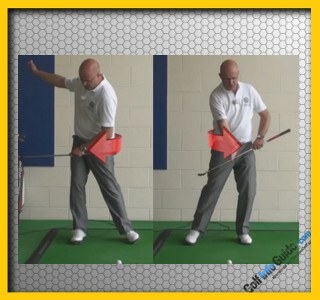
2. What Does Moving Off The Ball Mean?
Moving off the ball during the back swing can become a big problem for many amateur golfers. It normally occurs when players looking to increase back swing turn and power extend the arms away from the ball but let the body follow. This will cause most of the body weight to transfer onto the back foot and the hips, torso and head to slide backwards. This causes a number of problems. Because the body slides away from the ball, unless a special effort is made to get the body back to a similar position as it was at address, the strike can only be inconsistent.
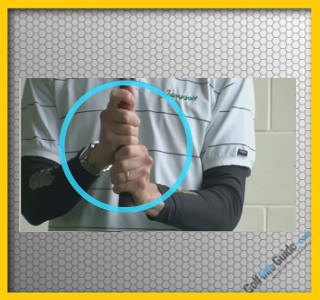
3. My Fingers Hurt Playing Golf, Should I Try The Baseball Grip?
When taking up your grip on the golf club handle, it is really important to get your hands working as one unit, rather than two separate units. The easiest way to achieve this is to make sure that your hands are connected, by either interlocking your grip or overlapping. An interlocking grip sees a right handed player interlocking their left index finger with their right little finger. An overlapping grip sees the little finger on the right hand sit between the left index finger and middle finger groove. However, it is the position of the hands, rather than their connection that is crucial.
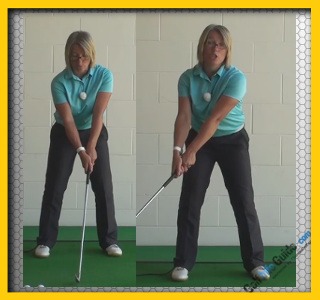
4. Should I Lock My Right Arm In My Golf Set Up Position?
When in your set up position ready to play a golf shot, your left arm should be straight but your right arm should be relaxed and bent at the elbow, with the elbow tucked in towards your torso (for right handed golfers). In very simplified terms, the position that you create at address is the position that you want to move back into at impact. The only difference between address and impact is that your hips will have rotated towards the target and your weight will be slightly more on your left side, with your right heel lifting from the ground and the foot rotating towards the target.
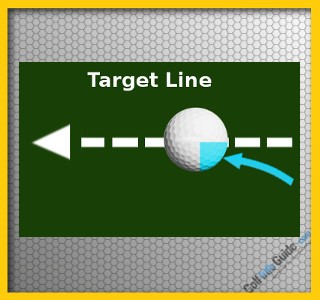
5. Should I Aim To Hit The Inside Of The Ball? And What Does This Mean?
If you place a golf ball on the floor in front of you and address it as though you are going to hit it, the side of the ball that is closest to you is known as the inside and the side of the ball that is furthest away from you is known as the outside. To hit a golf ball correctly, you should aim to hit the right side of the golf ball if you are a right-handed golfer, as this will allow you to strike the ball from the centre of the club face and also allow you to present the club face to the golf ball so that it is aiming at the target.
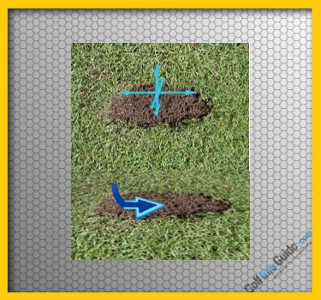
6. What Should My Golf Divots Look Like With A Short Iron?
When hitting solid short irons, golfers need to achieve a slightly descending angle of attack onto the ball. This descending blow will improve the overall distance, strike and spin rate of a short iron shot. The divot produced should be about the size of a dollar bill and a thin sliver of turf a couple of centimeters deep. To help achieve this divot size and strike, the angle of attack must be correct. The angle of attack is the steepness or shallowness of the angle on which the club approaches the ball.
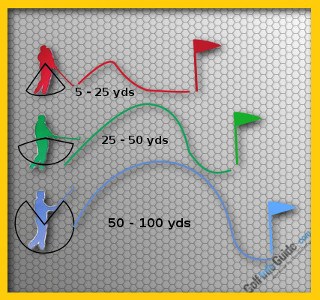
7. How Can I Hit It Close From 50 Yards Every Time?
The 50 yard pitch is a shot most players will face at least once during a round. Often the number of times you will be required to play this shot is much higher and having a consistent technique and knowledge of how to control distance is extremely important.The easiest way of hitting it close every time is to use the same swing length and create the same impact factors consistently.
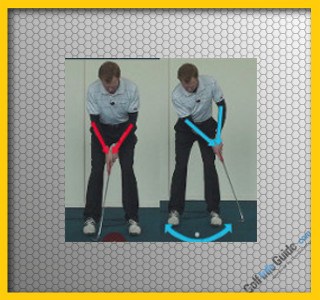
8. How Should My Elbows Bend During My Golf Putting Stroke?
The way your elbows bend during your putting stroke is very important, from the position they adopt at address to the positions they maintain or move to during the stroke. The elbows position has an affect on the alignment of the shoulders in the set up, and also the position of your putter face as the stroke moves back and through. Although you may not realise it, your elbows will be bending a little bit more as your putting stroke moves back and through, and may result in you asking yourself how did I miss that putt?.

9. What Does The Term “Clearing The Hips” Mean In My Golf Swing?
There are a number of different terms floating around the golfing lexicon with regards to the hip turn. The hip turn is the act of rotating the hips towards the target during the down swing which adds power and consistency to golf shots. Clearing the hips refers to this movement as the hips turn and clear out of the way allowing the arms and hands to move down into impact.

10. If I Have Too Stiff A Shaft In My Driver, What Effect Will This Have?
There are numerous variables when choosing a shaft for your driver and one of these variables is the shafts stiffness. There is a different flex of shaft to suit every type of golfer. If you are professionally custom fitted, getting the correct stiffness of shaft will have great benefits to your driving. On the other hand, if you have the incorrect stiffness of shaft in your driver, it can severely hinder youre driving.





